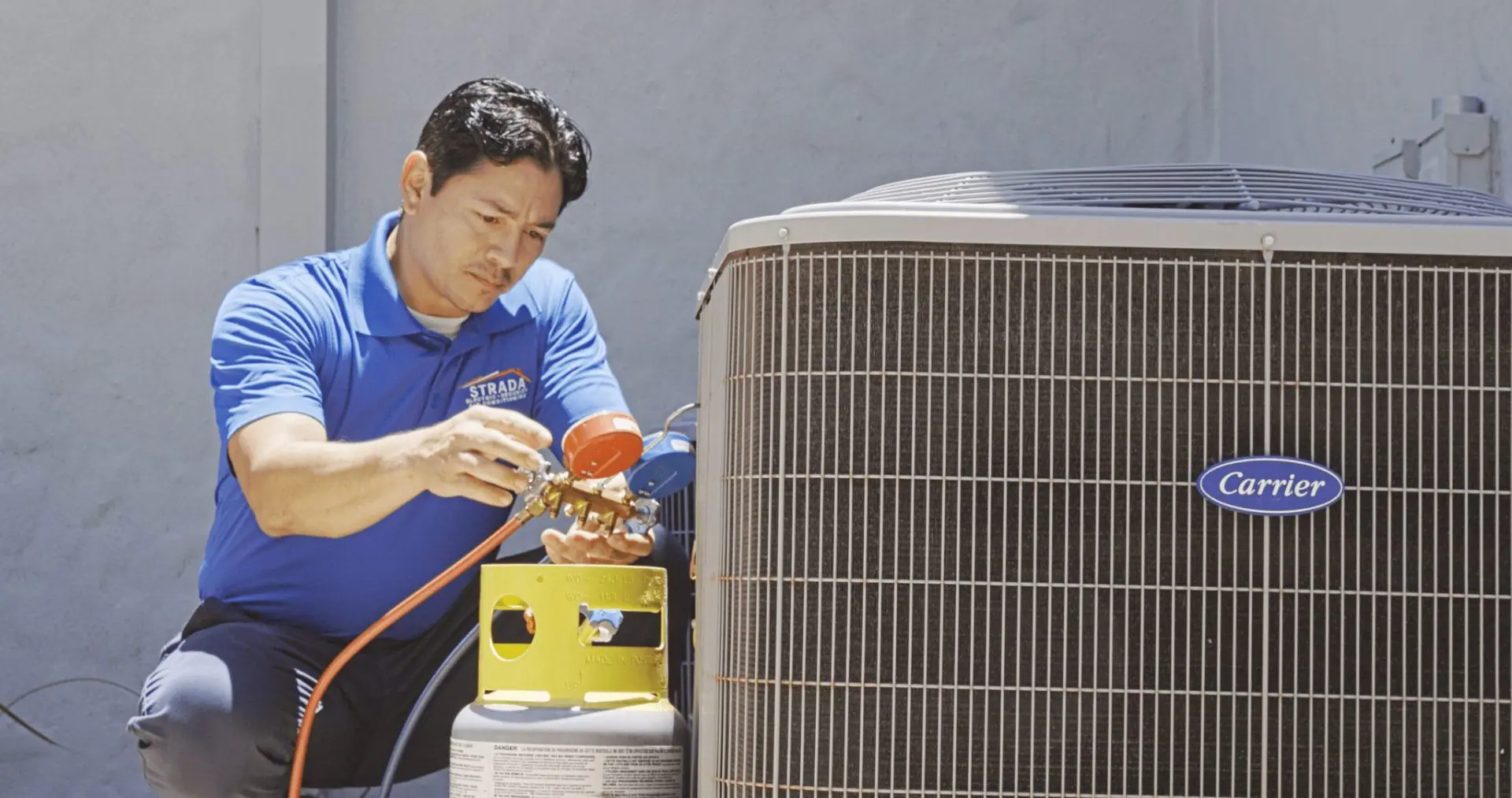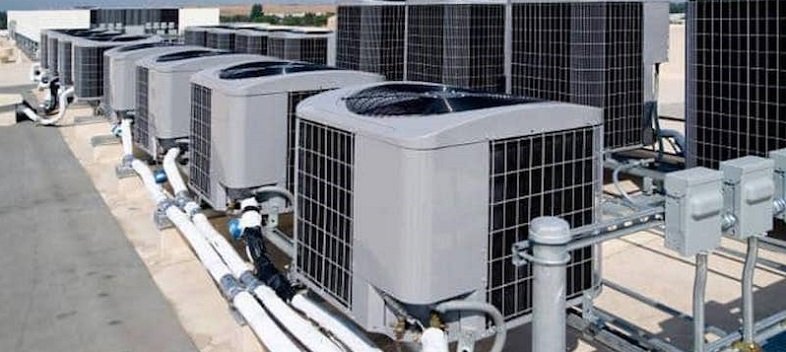Signs of a Quality heat pump installation ooltewah tn
Signs of a Quality heat pump installation ooltewah tn
Blog Article
Exactly How a Heat Pump and Heating System Interact to Maximize Your Home's Heating Effectiveness
Understanding exactly how a heatpump and heating system collaborate is crucial for home owners seeking efficient home heating options. Each system has its strengths, offering a balanced technique to home convenience. The heat pump masters moderate temperatures, while the heating system provides quick heat throughout extreme cold. This harmony not only minimizes power expenses yet additionally enhances the life expectancy of both appliances. What variables affect this partnership, and how can homeowners optimize their advantages?
Comprehending Heat Pumps: Exactly How They Function
Many people may be unknown with their inner functions, warmth pumps play an essential function in modern heating systems. These gadgets operate by transferring heat from one area to an additional, making use of the concepts of thermodynamics. In chillier months, a heatpump extracts warmth from the outside air, ground, or water, and transfers it inside to warm up the home. Alternatively, during warmer months, it can reverse the process, serving as an air conditioner by getting rid of warmth from inside to the outside.Heat pumps are composed of an evaporator, compressor, condenser, and expansion shutoff. The cooling agent within the system absorbs warm as it vaporizes at reduced temperatures and pressures. The compressor after that increases the stress and temperature level of the cooling agent, allowing it to launch warmth as it condenses. This efficient procedure can significantly reduce energy intake compared to typical heating techniques, making heatpump a sustainable choice for environment control in homes.
The Function of Furnaces in Home Heating
Heaters play a crucial function in home heating by offering a trusted source of heat throughout the cooler months. They operate by creating warmth with burning or electrical resistance, distributing it throughout the home through air ducts or glowing systems. The efficiency of a heating system is often measured by its Annual Gas Utilization Efficiency (AFUE) ranking, which indicates just how efficiently the device transforms gas into heat.Furnaces can use various energy resources, including all-natural gas, oil, lp, or electricity, permitting house owners to choose the most suitable choice for their requirements. Unlike heatpump, which might struggle in extreme cold, heaters maintain regular efficiency, making certain that indoor temperatures stay comfortable despite outside conditions. Furthermore, modern-day heating systems frequently come outfitted with innovative technology, such as clever thermostats and variable-speed blowers, boosting their performance and responsiveness. This versatility makes heating systems an essential part in all-inclusive home heating techniques.

Advantages of Utilizing Both Equipments With Each Other
Integrating the strengths of both furnaces and heatpump can bring about an extra reliable and efficient home heating service. Using both systems permits home owners to make the most of the heatpump's power performance during milder temperature levels while depending on the heating system for more extreme cold problems. This double technique can considerably reduce power expenses, as warmth pumps take in much less electrical energy than typical heating techniques when temperature levels are moderate.Additionally, making use of both systems together can enhance convenience levels in the home. Heatpump can give regular, even home heating, while heating systems can quickly elevate ambient temperature levels when required. In addition, the assimilation of both systems can expand the life-span of devices by minimizing wear and tear on each system, as they share the workload. Eventually, home owners can enjoy a balanced, cost-effective heating service that adjusts perfectly to varying weather condition conditions, ensuring a cozy and inviting home throughout the winter season months.
Exactly How Heat Pumps and Furnaces Enhance Each Other
When home owners integrate heatpump and heating systems, they create a corresponding furnace that optimizes effectiveness and convenience. Heat pumps operate by transferring warmth from the outdoors air or ground, making them extremely efficient in moderate environments. They excel throughout milder temperatures, offering cost-efficient home heating. Conversely, furnaces generate warm with burning or electric resistance, supplying solid, immediate warmth during extreme cold conditions.The combination of these two systems allows for vibrant modifications based upon temperature variations. Throughout warmer months or milder winter months days, the warm pump can take the lead, conserving power and minimizing expenses. As temperatures decline, the heater can effortlessly involve, making sure constant warmth throughout the home. This harmony not just enhances power usage yet likewise boosts the life-span of both systems, as each system operates within its Full Article suitable efficiency range. With each other, they create a balanced atmosphere that adapts to varying environment demands.
Optimizing Performance: Tips for Homeowners
Property owners can enhance their heating performance through a number of useful strategies. Developing a routine upkeep routine, incorporating smart thermostat modern technology, and implementing efficient insulation and sealing remedies are key actions. These measures not only enhance comfort but additionally decrease energy expenses.
Routine Maintenance Schedule
To ensure optimal home heating effectiveness, establishing a normal maintenance timetable is vital for any home. Homeowners should focus on regular examinations of both heatpump and heating systems to ascertain peak performance. This consists of changing air filters each to three months, as blocked filters can significantly decrease effectiveness. Furthermore, scheduling expert upkeep a minimum of annually permits professionals to recognize and deal with potential issues before they intensify. Home owners ought to likewise clean up the heatpump's exterior system to avoid particles accumulation that can hinder air flow. By sticking to a normal upkeep schedule, homeowners not just enhance their heater' effectiveness however likewise prolong their life-span, leading to better convenience and lowered power costs throughout the colder months.
Smart Thermostat Integration
Integrating a smart thermostat right into a home heater can substantially boost energy effectiveness, especially as it enables precise control over temperature level setups. These gadgets can find out the house owner's schedule and choices, instantly readjusting the temperature level to optimize convenience while lessening energy use. They can reduce heating during times when the home is vacant, minimizing unnecessary consumption. Numerous wise thermostats likewise give real-time energy use information, enabling house owners to make enlightened choices regarding their heating routines. Furthermore, remote access by means of smartphone apps enables individuals to adjust setups from anywhere, making sure the home is cozy upon return. On the whole, clever thermostat assimilation not just enhances comfort yet considerably adds to power savings and effectiveness.
Insulation and Sealing Solutions
Smart thermostats play a vital function in energy efficiency, yet their efficiency can be substantially improved by appropriate insulation and sealing solutions. Home owners need to prioritize insulating floors, wall surfaces, and attic rooms to minimize warm loss. High-quality insulation products, such as spray foam or fiberglass, can considerably enhance thermal resistance. Furthermore, sealing spaces around doors, ducts, and home windows prevents cool air infiltration and warm retreat. Weatherstripping and caulking work techniques for dealing with these leaks - heat pump service. Normal examinations for air leakages, together with using blower door examinations, can aid determine problem areas. By investing in insulation and sealing, property owners can maximize the performance of their heating unit, ultimately causing reduced energy usage and reduced utility expenses
Typical Misconceptions Regarding Warm Pumps and Furnaces
What misconceptions border warm pumps and heaters? Several individuals wrongly think that warm pumps are inadequate in cooler environments. In truth, modern-day heatpump are designed to run efficiently also in reduced temperature levels, providing reputable heating throughout wintertime. Another usual misconception is that furnaces are constantly extra effective visit our website than warmth pumps. This depends on the particular power resources and effectiveness scores of the systems in question. Some might likewise think that utilizing both systems at the same time is unnecessary, yet in reality, this mix can maximize home heating performance, specifically throughout extreme weather conditions. Additionally, individuals typically think that warmth pumps need constant upkeep, when actually, they have comparable maintenance requires to typical heater. By disproving these misconceptions, homeowners can make even more enlightened decisions regarding their heating options, ultimately resulting in enhanced like this comfort and energy effectiveness in their homes.
Upkeep Factors To Consider for Combined Equipments

Frequently Asked Inquiries
Can Heat Pumps Job Successfully in Exceptionally Cold Climates?
Warmth pumps can struggle in incredibly cold environments as a result of lowered efficiency and warmth removal constraints. However, innovations in modern technology have actually resulted in designs made for much better performance in such problems, improving their practicality in severe environments.
Just How Lengthy Do Warmth Pumps and Furnaces Typically Last?
Heatpump typically last 15 to twenty years, while heaters have a life-span of 15 to thirty years. Normal upkeep can expand their durability, ensuring reliable operation and reducing the requirement for early replacements.

What Is the Average Price of Installing Both Equipments?
The typical cost of setting up both a heat pump and a heating system usually ranges in between $5,000 to $10,000 - furnace replacement. Factors affecting this expense include system dimension, installation intricacy, and regional labor rates
Are There Tax Obligation Incentives for Making Use Of Energy-Efficient Home Heating Equipments?
Several property owners make inquiries concerning tax obligation rewards for energy-efficient heater. Various federal and state programs commonly supply credit ratings or rebates, encouraging the fostering of lasting modern technologies to minimize energy consumption and promote ecological responsibility.
Exactly how Do I Select the Right Size Heatpump and Heating System?
Picking the right size heatpump and heating system includes computing the home's square video footage, taking into consideration insulation quality, and examining neighborhood environment. Consulting a specialist can guarantee optimal system performance and energy efficiency based upon particular demands. furnace replacement. Comprehending just how a heat pump and furnace job with each other is necessary for homeowners looking for reliable heating services. In colder months, a heat pump removes warmth from the outside air, ground, or water, and transfers it indoors to warm up the living room. When property owners integrate heat pumps and furnaces, they create a corresponding home heating system that maximizes efficiency and convenience. Warmth pumps run by moving warm from the outside air or ground, making them extremely effective in modest environments. Heat pumps can struggle in extremely chilly climates due to reduced performance and warmth removal restrictions
Report this page